Bangabandhu Bridge (Bengali: যমুনা বহুমুখী সেতু) is located on the Jamuna River in central Bangladesh. It connects Sirajganj and Tangail. This bridge establishes a strategic connection between the east and west of Bangladesh. Also called Poongi Bridge.
The length of the bridge is 3.5 mi (5.6 km), and the Length over water is 2.1 mi (3.4 km). Construction of the bridge began on April 10, 1994 and was completed in June 1998. It cost US $962 million.
In addition to the rapid transportation of goods and passengers by road and rail, it also promotes the transmission of electricity and natural gas and the integration of telecommunications links.
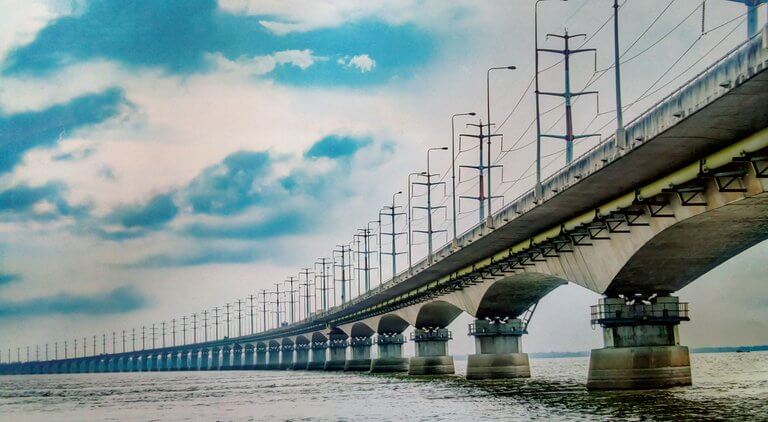
History
East Pakistan period
- The leader of the Bangladeshi people, Abdul hamid khan bhasani, first proposed the construction of the Jamuna Bridge on the political level in 1949.
- In the East Pakistan election in 1954, the United Front’s 21-point declaration contained requirements for the bridge.
- But due to political turmoil and the war of liberation, all efforts were interrupted.
After Bangladesh’s independence
- After Bangladesh became independent, the new government publicly expressed its intention to build a bridge over Jamuna in 1972.
- 1982: After investigation, the government decided to build a bridge that could transport weather and pass cars and trains.
- July 3, 1985: The President of Bangladesh issued a decree to establish the Jamuna Multipurpose Bridge Management Authority (JMBA) to implement the project.
- 1992: The Bangladeshi government finally reached a bridge funding plan with Japan IDA, ADB and OECF.
- 1993: International bidding for the project started.
- March 1994: The bridge project contract was signed.
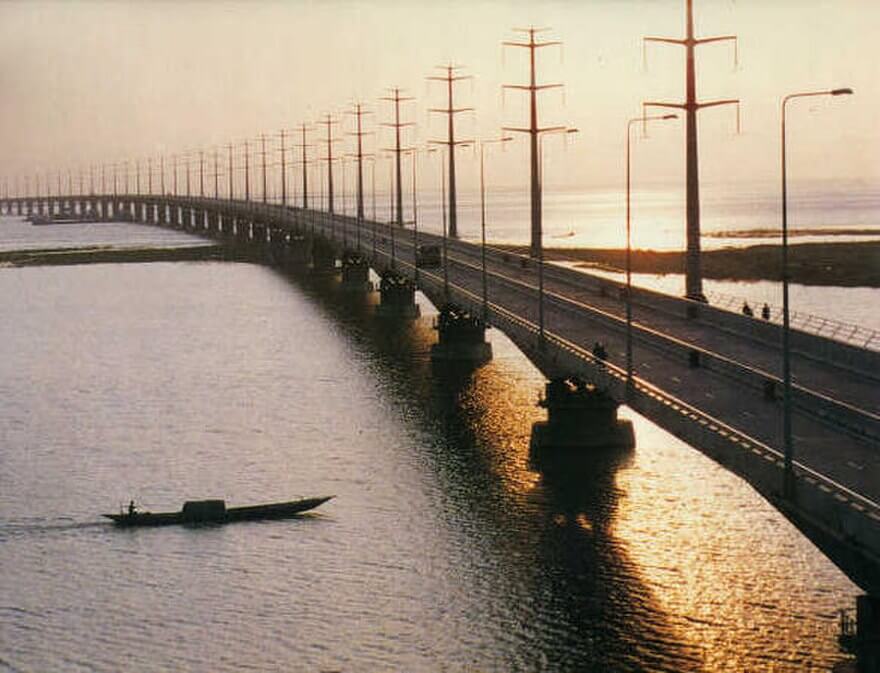
Construction process
- April 10, 1994: The foundation stone laying ceremony of the bridge was held.
- October 15, 1994: The actual construction of the bridge began.
- October 15, 1995: Piling construction began for the pillars of the bridge. The pillars were constructed of 121 steel. The piling construction was completed in July 1996.
- June 23, 1997: Bangabandhu Bridge opened to traffic.
- June 1998: The construction of the bridge was completed and the railway opened to traffic. All components except the gas pipeline are being completed.
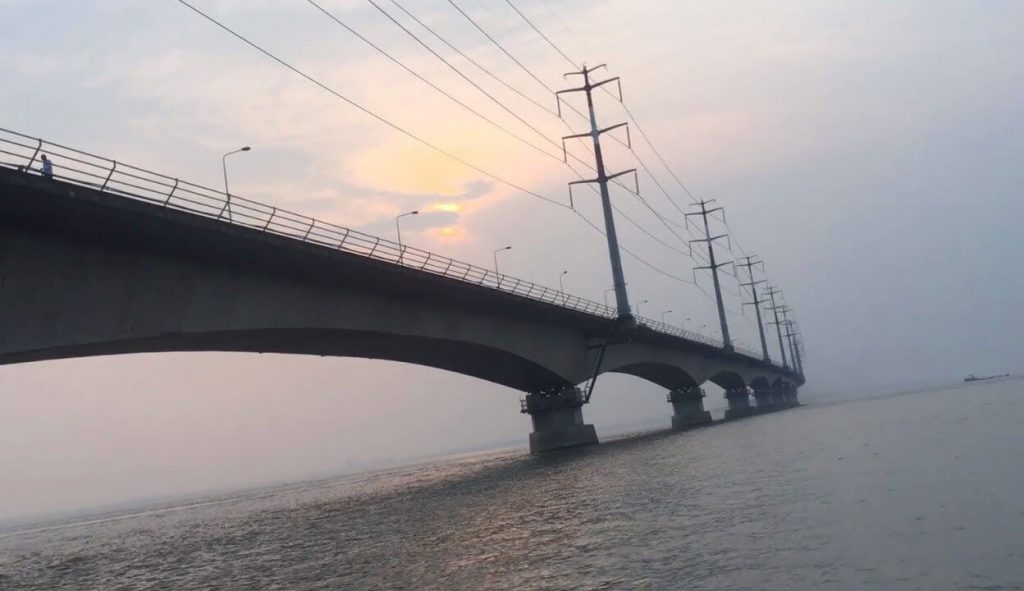
Building technical parameters
Bangabandhu Bridge is 3.5 mi (5.6 km) long and the main bridge is 3 mi (4.8 km) long. The longest span is 328 ft (100 m), and the span at both ends is about 213 ft (65 m). The total width of the bridge deck is 61 ft (18.5 m).
This bridge is a multi-purpose bridge. The bridge also carries railway transportation and connects Bangladesh’s electricity and natural gas network to a national grid. It includes multiple functions of roads, railways, power transportation, natural gas transportation and communications. It cost US $962 million.
Road and rail
The bridge has a 4-lane highway and a 2-lane railway, and the total width of the bridge deck is 61 ft (18.5 m).
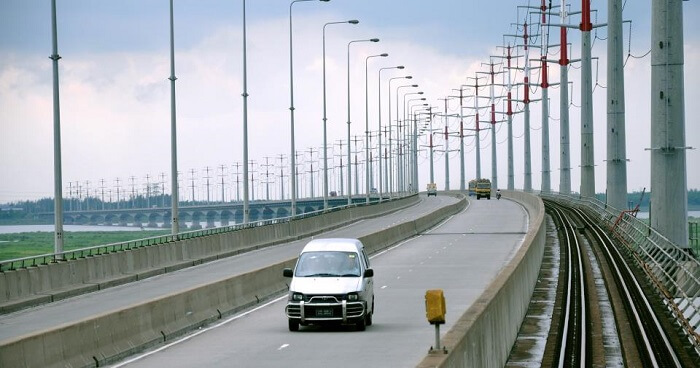
Electric transportation
This bridge is equipped with a 230 kV high-voltage electrical interconnector, thus realizing power transfer.
Natural gas transportation
This bridge is equipped with a 750 mm diameter high-pressure natural gas pipeline, which can transport natural gas. The natural gas pipeline is located under the cantilever of the box section.
Telecommunication cable
The telecommunications pipeline passes through the box girder deck and is located below the bridge deck.
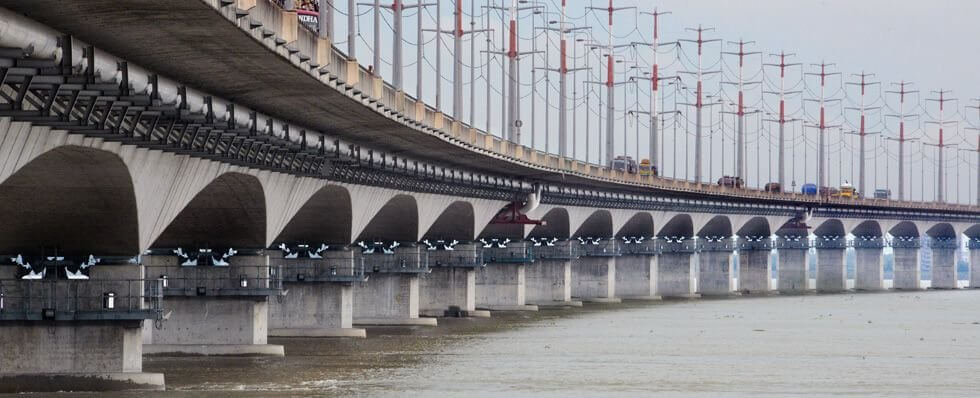
Cost
The construction cost of the bridge was US$962 million.
IDA, Bank of Asia, Japan’s OECF and the government of Bangladesh shared the construction costs.
- The International Development Association accounts for 22%.
- Asian Bank accounts for 22%.
- The OECD accounted for 22%.
- Bangladesh 34%.
The components of the project cost are:
- Bridges and viaducts: US$269 million (28%).
- River repair works: 323 million Canadian dollars (35%).
- Roads and dikes: US$71 million (7%).
- Consultancy fee: 33 million US dollars (3%).
- Land, immigration and environment: 67 million USD (7%).
- Organization: 13 million US dollars (1%).
- Others: US$186 million (19%).
Bridge function
Bangabandhu Bridge connects millions of people in the northwestern region of Bangladesh with the rest of the country, and has a huge socio-economic impact on Bangladesh.
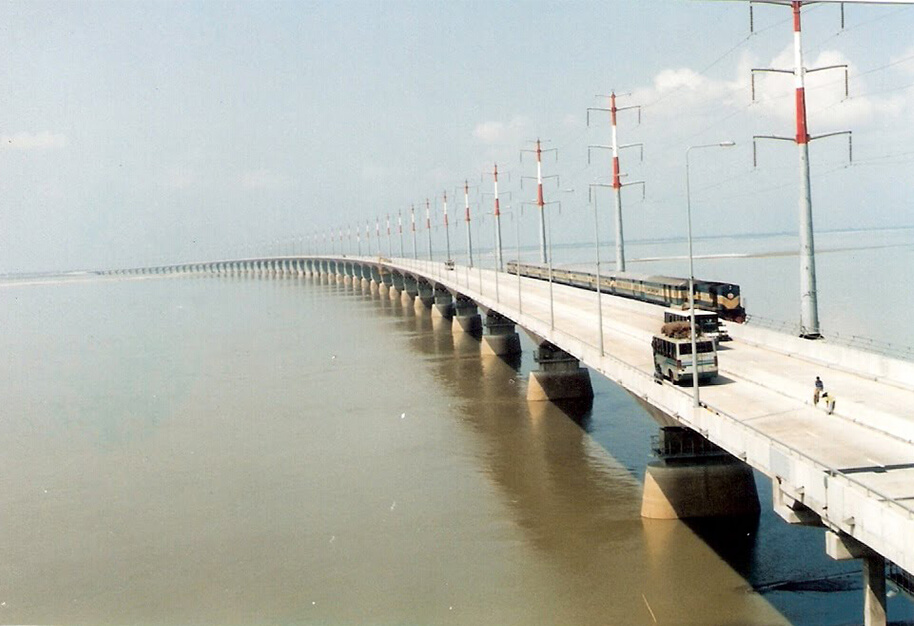
Bangabandhu Bridge Data
- Country
- Bangladesh
- Region
- South Asia
- Status
- In use
- Official name
- যমুনা বহুমুখী সেতু
- Other name
- Jamuna Bridge, Poongi bridge
- Location
- Between Bhuapur and Sirajganj in Bangladesh
- Owner
- Jamuna Multipurpose Bridge Authority
- Contractor
- Hyundai Engineering & Construction
- Designer
- T. Y. Lin International
- Operator
- Bangladesh Bridge Authority
- Cost
- US $962 million
- Began
- Oct-15, 1994
- Opened
- Jun, 1998
- Total length
- 3.5 mi ( 5.6 km )
- main bridge length
- 3 mi ( 4.8 km )
- Length over water
- 2.1 mi ( 3.4 km )
- Width
- 61 ft ( 18.5 m )
- Longest span
- 328 ft ( 100 m )
- Design type
- Box girder bridge
- Road scale
- 4 road lanes, 2 rail tracks
- Crosses
- Jamuna River
View Bangabandhu Bridge on Google Satellite Map
Google satellite maps allow you to see building details more clearly, including natural landscapes such as mountains, rivers, deserts, sea and man-made engineering buildings.
If you are very interested in this engineering building, it is a good idea to click below Google Map icon. We will help you jump to the corresponding location of this building or engineering on Google satellite map.






























































